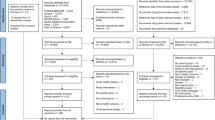Abstract
Taiwan’s rowing athletes have performed well during the Asian Games, but their performance in the Olympics has not been adequate. In addition to their hard work and rigorous and effective training, the skill of the athletes is a key factor for achieving good results. In this study, an artificial intelligence (AI) evaluation algorithm is developed to help rowing athletes excel in the sporting events. The AI algorithm uses the analytic hierarchy process to invite experts and scholars in the rowing field to answer a questionnaire. The technique for order performance by similarity to ideal solution is then applied to calculate the ranking of selection indicators, to construct an evaluation model for rowing athletes. The key findings indicate that physicality (or the body structure) is the highest priority among the four main aspects of talent identification; this is followed, in descending order, by specialism, reaction, and psychological elements. The proposed AI strategy was established as the most beneficial decision model and can be used to identify talented rowers in the future.


Similar content being viewed by others
Availability of data and materials
Not applicable.
Code availability
Not applicable.
References
Behzadian M, Khanmohammadi Otaghsara S, Yazdani M, Ignatius J (2012) A state-of the-art survey of TOPSIS applications. Expert Syst Appl 39(17):13051–13069. https://doi.org/10.1016/j.eswa.2012.05.056
Cao JZ, Zhang YG, Gao JJ (2013) Excellent basketball player special ability evaluation model construction. Jiada Sports Health Leisure J 12(3):109–122
Chen CC, Lee YT, Tsai CM (2014) Professional baseball team starting pitcher selection using AHP and TOPSIS methods. Int J Perform Anal Sport 14(2):545–563. https://doi.org/10.1080/24748668.2014.11868742
Delgado-Galvan X, Perez-Garcia R, Izquierdo J, Mora-Rodriguez J (2010) An analytic hierarchy process for assessing externalities in water leakage management. Math Comput Model 52(7–8):1194–1202. https://doi.org/10.1016/j.mcm.2010.03.014
Gong TY, Huang TY, Yang SG, Chen WL, Hong RC (2012) Research on the body shape data of excellent male rowers in Taiwan-Take Wang Minghui as an example. Proc Symp Sports Train Taiwan Straits 2012:197–199
Huang XZ, Huang TY, Liu YQ, Zhou JZ, Gong TY (2013) Research on the body data of Taiwan’s outstanding rowers-take Qiu Juyu as an example. Proc Cross Strait Sports Train Sci Seminar 2012:1–5
Huang YZ (2019) Research on the selection model of rowers. Master’s Thesis, Institute of Leisure Sports Management, National Taiwan Sports University, Taichung City
Hwang C, Yoon K (1981) Multiple attribute decision making: methods and application. Springer Publications, New York
Johnston K, Wattie N, Schorer J, Baker J (2018) Talent identification in sport: a systematic review. Sports Med 48(1):97–109. https://doi.org/10.1007/s40279-017-0803-2
Karaköprü U, Kabadurmuş Ö (2020) Evaluation of stadium locations using AHP and TOPSIS methods. Eskişehir Osmangazi Üniv İktisadi ve İdari Bilimler Dergisi 15(1):1–16. https://doi.org/10.17153/oguiibf.484468
Kashid U, Mehta SN, Basotia V (2019) A hybrid AHP-TOPSIS mathematical multi criteria decision-making model for players performance evaluation and selection in IPL A case study. Nat Conf "New Frontiers of Innovation in Management, Social Science, and Technology and their Impact on Societal Development” AU-FAIT 5(2). https://ssrn.com/abstract=3751946
Mavi RK, Mavi NK, Kiani L (2012) Ranking football teams with AHP and TOPSIS methods. Int J Decis Sci Risk Manag 4(1–2):1753–7177. https://doi.org/10.1504/ijdsrm.2012.046620
Nurjaya DR, Abdullah AG, Ma’munRusdiana AA (2020) Rowing talent identification based on main and weighted criteria from the analytic hierarchy process (AHP). J Eng Sci Technol 15:3723–3740
Roth SM (2012) Critical overview of applications of genetic testing in sport talent identification. Recent Pat DNA Gene Seq 6(3):247–255. https://doi.org/10.2174/187221512802717402
Rongen F, McKenna J, Cobley S, Till K (2018) Are youth sport talent identification and development systems necessary and healthy? Sports Med Open 4:18. https://doi.org/10.1186/s40798-018-0135-2
Saaty TL (1980) The analytic hierarchy process. McGraw Hill Publications.
Saaty TL (1990) How to mark a decision: the analytic hierarchy process. Eur J Oper Res 48:9–26. https://doi.org/10.1016/0377-2217(90)90057-I
Salimi M, Soltan HM, Shaabani BGHR (2012) Site selection of sport facilities using incessant and cessation spatial methods based on combination of AHP & TOPSIS models. Sport Manag Stud 4(13):157–180
Shen BC (2017) The key factor of applying Delphi method to construct the talent selection of middle school baseball sports pitchers. Master’s Thesis, Aletheia University, New Taipei City
Tang MX (1996) The development history of the centenary of the Olympics. Chinese Taipei Olympic Committee, Taipei City
Till K, Baker J (2020) Challenges and [possible] solutions to optimizing talent identification and development in sport. Front Psychol 11:664. https://doi.org/10.3389/fpsyg.2020.00664
Xu SY (2006) The current situation and prospects of Taiwan sports. Nat Sports Q 35(1):17–18
Yuan SG (2017) Survey on the body shape of the women's volleyball open group in the college of southern Taiwan. Master’s Thesis, National Kaohsiung University, Kaohsiung City
Zhang L, Wen H, Li D, Fu Z, Cui S (2010) E-learning adoption intention and its key influence factors based on innovation adoption theory. Math Comput Model 51(11–12):1428–1432. https://doi.org/10.1016/j.mcm.2009.11.013
Zheng SJ (2017) Construction of talent selection model for different positions of excellent college football players. Master’s Thesis, Fu Yan University, New Taipei City
Funding
The authors did not receive support from any organization for the submitted work.
Author information
Authors and Affiliations
Contributions
Jing-Wei Liu contributed to writing—original draft, conceptualization, constructing experimental model, and methodology. Sheng-Hsiang Chen contributed to methodology, validation, and writing—review and editing. Che-Hsiu Chen contributed to data curation. Tsung-Han Huang contributed to project administration and data curation.
Corresponding author
Ethics declarations
Conflict of interest
The authors declare that they have no obvious competing financial interests or personal relationships that could have appeared to influence the work reported in this paper.
Ethics approval
This article does not present any studies with human participants or animals performed by any of the authors.
Additional information
Communicated by Mu-Yen Chen.
Publisher's Note
Springer Nature remains neutral with regard to jurisdictional claims in published maps and institutional affiliations.
Rights and permissions
About this article
Cite this article
Liu, JW., Chen, SH., Chen, CH. et al. Constructing an artificial intelligence strategy algorithm for the identification of talented rowing athletes. Soft Comput 27, 1743–1750 (2023). https://doi.org/10.1007/s00500-021-06050-3
Accepted:
Published:
Issue Date:
DOI: https://doi.org/10.1007/s00500-021-06050-3




